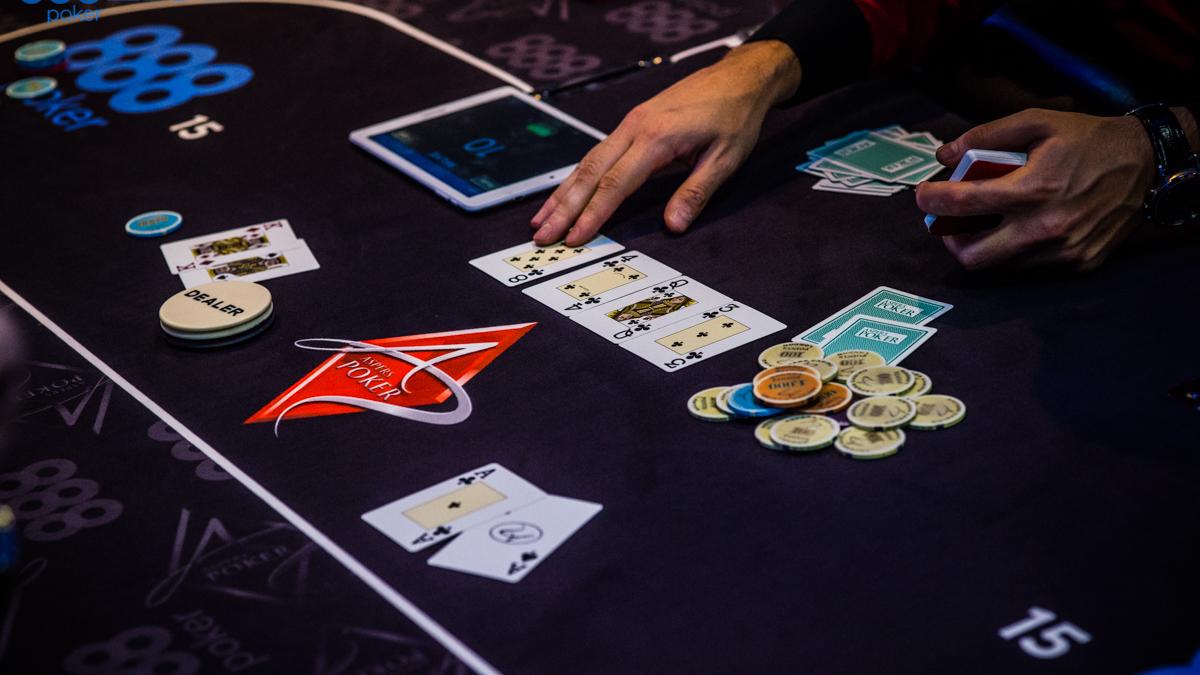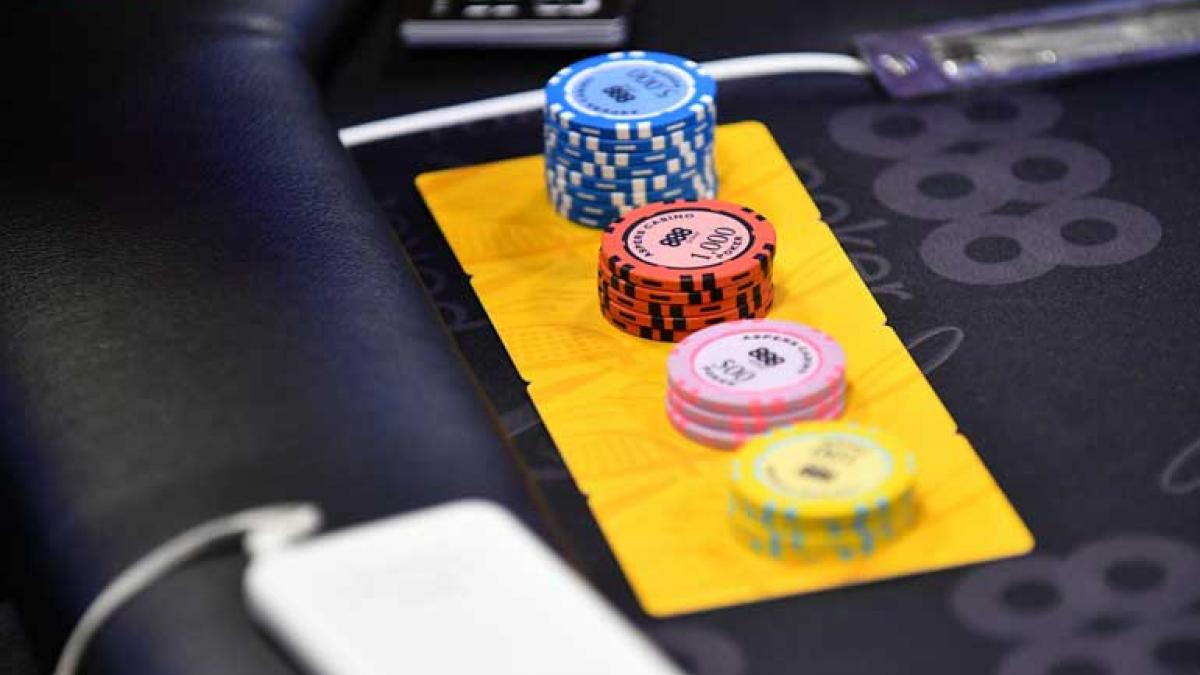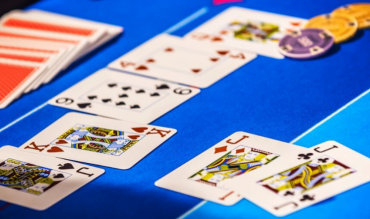For anyone even vaguely familiar with the ins and outs of Texas Hold'em, the term "flop" immediately brings to mind those three cards plopped down in the center of the poker table. The flop, indeed, provides a pivotal moment in the game, presenting us with a snapshot of the community cards.
At this stage, we must make crucial decisions based on these three cards alone, with no knowledge of what the turn or river cards might bring. In poker, where you're ultimately dealing with seven cards – your two hole cards, the three flop cards, the turn card, and the river card – the desire to reveal as many of these cards as possible becomes a strategic aspiration. Wouldn’t it be nice to make decisions after seeing four cards rather than three?
This is entirely possible – and no, doesn’t require X-ray glasses or marked cards. We’re not advocating for tricks up your sleeve here. All it takes is a little planning ahead and willingness to get out of your comfort zone.
The answer lies in a fundamental and essential poker move: the three-bet. Let's dive into why the three-bet is the key to seeing a four-card flop and how to execute it effectively.
Understanding the Basics: The Three-Card Flop
Just a quick refresher if you’re new here: in a typical game of Texas Hold ‘em, players are dealt two hole cards, which are their own private cards, hidden from the other players. The game then goes into several betting rounds and the grand reveal of community cards.

The first three community cards are referred to as "the flop." At this point, players must evaluate their hand's potential based on these three cards only, as they still don't know what to expect on the turn or river. They have 5/7 of the hand complete (two hole cards + three flop cards). Imagine wielding the power of having 6/7 instead (two hole cards + three flop cards + one turn card).
The ability to see a “four-card flop” can be a game-changer, allowing for better-informed decisions and a knockout competitive edge.
The Three-Bet: Unlocking the Four-Card Flop
Now let's discuss the three-bet, a critical poker maneuver that fast-tracks you to the coveted fourth community card. As you may already know, the three-bet involves raising an opponent's initial bet or raise (“reraising”). By doing so, you immediately create a better betting situation, putting you in the driver’s seat.
Your opponent must now decide to fold, call, or re-raise. And if you’re playing against recreational or unstudied opponents, they will almost always fold or call.
Even if someone suspects you’re up to something and three-betting them with a lousy hand, they’re unlikely to do anything about it. They’re probably not going to play back at you unless they genuinely have a super premium holding. Instead, they’ll likely just call your bet and try to trap (huge mistake!)
If they merely call your bet, you’ve got them right where you want them. Phase one of unlocking the four-card flop is complete.
The Benefits of the Three-Bet
- Gaining Control: The three-bet allows you to take control of the betting and potentially narrow the field of opponents. It is much easier to beat one player than it is to beat three.
- Revealing More Information: When your three-bet succeeds, you're essentially buying the right to see more cards without additional risk because you can check back the flop as you wish.
- Enhancing Decision-Making: With more cards on the table, you can make more informed decisions during subsequent betting rounds. You'll have a clearer picture of the hand's potential.
For example, let’s say you 3-bet a hand like 6♥️7♥️.
The flop: 9♠️6♠️Q♥️
Is your hand winning? We’re not sure. Maybe, maybe not. Would it be worth calling check-raise? Again, it’s unclear because perhaps your opponent has a bigger pair than you or perhaps they’re raising wide with a draw.
And even if they do have a hand like a queen, is it worth trying to see the turn card in order to improve? All of these are tough, uncomfortable questions without reliable right answers. What if, however, you knew the turn card was going to be the K♠️?
On a board like 9♠️6♠️Q♥️K♠️, our measly 6♥️ shrivels up in fear. We now know not to put another chip in the middle.
But what if the turn is something more favorable, like, say, the 5♥️? Someone would have to prise that hand out of you with a crowbar!
Holding 7♥️6♥️ on 9♠️6♠️Q♥️5♥️ presents exciting possibilities. We’ve got a pair, flush draw, and straight draw! With so much potential, we can confidently call nearly any bet or raise. Or we can bet ourselves.
By betting the turn and most rivers, we set ourselves up for either a nice bluff or a nice hit with an incredibly disguised, improved hand. Implementing this strategy often will result in many backdoor draw opportunities! Your opponents won’t see it coming.

Executing the Three-Bet
It would be a mistake to blindly three-bet all hands, all the time. Before incorporating a light three-bet approach, there are a few things to consider.
- Choose the Right Moment: Timing is crucial when executing a three-bet. Target eager openers – the types of players who raise their hands all the time – as they are less likely to have nutted holdings. Also any time you sense weakness. Do not, I repeat, do not go after people who seem incredibly interested in their hand. This goes double for someone who hasn’t played a hand in an hour. If they fold often and raise infrequently, you’re almost always targeting an incredibly premium holding … and you don’t want to attack people at the top of their range.
- Consider Table Dynamics: Take into account the dynamics of the table and your opponents. If you’re at a loosey-goosey table where multiple players will cold-call your three-bets, then this isolation strategy will obviously be ineffective. It will also not work at a table where everyone is limping. It will also not work at a table full of sharks. The super light three-bet strategy works best at tables against amateur to intermediate players, not poker beginners or pros.
- Be Prepared to Follow Through: If you do choose to three-bet, be prepared to continue with a solid plan based on your opponent's response. This may involve betting on the flop even when it feels silly. You may only have a comical 7♦️5♦️ on A♥️K♠️8♣️, but if your opponent is holding pocket nines, they’re almost always going to frustratingly fold.
That being said, if you bet on a flop like this and face resistance, it’s almost always wise to then shut it down. One bet, and you’re done!
Closing Thoughts
In summary, how do we get to see a “four-card flop”? By three-betting in position pre-flop, which thereby gives us the option to check back on the flop if we so please. (This doesn’t work if you’re out of position! Don’t do it from the blinds!)
This works best against mediocre players who aren’t going to donk into you on many flops ,,, most mildly experienced players know that when someone three-bets, it’s natural to check to that person on the flop. It’s called “playing in flow.” So make sure you’re only implementing this strategy against players who have some sort of basic knowledge of the game, and are familiar with “checking to the raiser.”
Another thing to keep in mind is that this strategy reaps the highest rewards when you three-bet medium-strength hands.
For example, if you’re holding a pair of aces or kings, you’re not going to be very interested in checking back flop to see a free turn card. With few exceptions, you’re almost always going to want to just bet the flop. An extra flop card is of little interest to you.
Instead, where this works best is when playing suited ‘gappers’ or connectors. Hands like J♥️T♥️ or even 9♠️7♠️. These hands usually need some improvement in order to win… it’s unlikely that your opponent is open-raising with a worse hand like five-high. It’s the more curious hands like these that will sometimes want the option to check back in position in order to realize their potential.
Particularly the lower, junkier holdings. You will likely need more information before knowing if they’re good or not. And if you just call with these hands rather than three-bet, what is likely to happen is that other people will call the initial bet too, and, mark my words, it’s almost impossible for 9♠️7♠️ to beat four or five players without absolutely hitting gin. But against just one player, even a naked nine could be good.
You also have the incredible benefit of a highly concealed hand. If you do hit something big, your opponent will likely be caught off guard. It’s going to be hard for them to guess you reraised them with nine-high! The times you do win can easily be in larger, more meaningful pots. Also, when you finally do have a “real” three-betting hand like pocket queens, kings, or aces, they might not even believe you! You’ll get paid off larger in these circumstances as well.
Overall, because your opponent is forced to have acted twice out of position, you gain a significant strategic advantage. Usually they will check to you twice – on both flop and turn – and you can make better decisions accordingly.
If you absolutely smash the flop, then sure, start betting. But the same goes for a total whiff. It’s really those in-between times where you’re just not sure if your hand is good enough to bet or call a bet that you can truly benefit from seeing that extra card. This is why you want to make sure to incorporate this strategy with your more middling holdings, and not just three-bet big pairs or ace-king.
Finally, don’t freak out if people start jamming on you or four-betting more often. Because even if they do, it will almost always only be irregularly and with very good hands. Sure, they might shove Ace-Queen against you if you’re three-betting all the time where they wouldn’t against another person. But for the vast majority of situations, they’ll just call or fold … it doesn’t matter if they’re suspicious!
They might see all your three-bets and think you’re up to something, but most people aren’t trained how to respond. They won’t be prepared to four-bet you light, let alone have any idea how to size it. All they can really do is shove. Four-bet sizing is unfamiliar territory, so they’ll basically be rendered helpless. Poker is a competition, and as cutthroat as it may sound, most people will be entirely incapable of playing back at you.
They’re not trained in dealing with this level of aggression. But you are.


